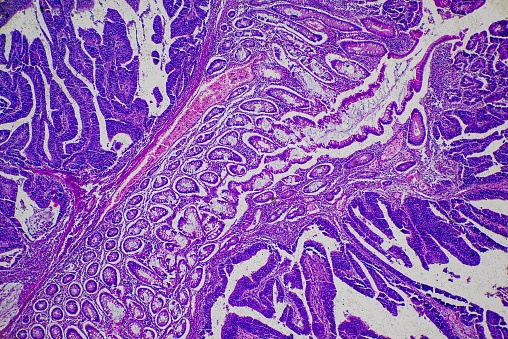
A new computational technique called CIBERSORTx can effectively analyze the RNA of individuals cells taken from whole-tissue samples or data sets, according to researchers from Stanford University School of Medicine who will publish their findings this week in Nature Biotechnology.
Single-cell RNA sequencing enables scientists to examine individual cells and their behaviors in diseases such as cancer. However, this emerging technology cannot be performed on most preserved tissue samples, can be costly, and cannot be completed at the scale required of a routine clinical treatment. In an effort to rectify these deficiencies, Aaron Newman, PhD, assistant professor of biomedical data science, and lead author of the paper, said in a press release that “we believe this technique has major implications for biomedical discovery and precision medicine.”
CIBERSORTx stands as an upgraded technique developed by the research group called CIBERSORT, which allowed them to “take a mixture of cells and, by analyzing the frequency with which certain molecules were made, could tell how much of each kind of cell was in the original mix without having to physically sort them,” according to Ash Alizadeh, MD, PhD, associate professor of medicine, and senior author.
CIBERSORTx Can Discern Cell Differences
The researchers began by conducting a single-cell RNA analysis of a small sample of tissue, such as a cancerous tumor. From there, they separate the cells in the tumor and observe the RNA that each cell produces. This process creates a “bar code,” a pattern of RNA expression that identifies not only what kind of cell is being examined, but also the subtype of mode the cell is operating within. The researchers then analyzed over 1,000 whole tumors using the technique and discovered not only differences between cancer cells and normal cells, but also found that immune cells infiltrating a tumor behaved differently than circulating immune cells. Moreover, their research suggests that even normal structural cells encircling the cancer cells acted differently than the same type of cells in other parts of the same organ.
New computational tool enables powerful molecular analysis of biomedical tissue samples https://t.co/MTkdENPpTn pic.twitter.com/cKb47UrOH9
— Zyite (@ZyiteGadgets) May 6, 2019
“What CIBERSORTx does is let us not just tell how much apple there is in the smoothie, but how many are Granny Smiths, how many are Red Delicious, how many are still green and how many are bruised,” Alizadeh said. “Similarly, starting with a mix of RNA barcodes from a tumor can give us insights into the mix of cell types and their perturbed cell states in these tumors, and how we might be able to address these defects for cancer therapy.”
CIBERSORTx may also enable the discovery of new cancer cell markers that will provide alternative pathways for attacking cancer cells. “It took 30 years to identify PD-1 and CTLA4 as important proteins, but these markers just jump out of the data when we use CIBERSORTx to correlate gene expression of cells in tumors with treatment outcomes,” Alizadeh said.
The Stanford scientists, as with their original tool, plan to let researchers from around the world test CIBERSORTx algorithms on computers at Stanford through a link. The lead authors anticipate an influx of online traffic, saying that “we expect to see smoke coming out of the computer room.”
New computational tool enables powerful molecular analysis of biomedical tissue samples https://t.co/zLc9PoXS1C
— Bioengineer.org (@bioengineerorg) May 6, 2019
news biotech New computational tool enables powerful molecular analysis of biomedical tissue samples: Biotechnology Pharma and Biopharma News &8211; Research &8211; Science &8211; Lifescience BiotechBiopharmaPharma New computational tool enables powerful… https://t.co/GKrakxDHzY
— Renal Cell Carcinoma (@Renal_Bio) May 6, 2019







 © 2025 Mashup Media, LLC, a Formedics Property. All Rights Reserved.
© 2025 Mashup Media, LLC, a Formedics Property. All Rights Reserved.